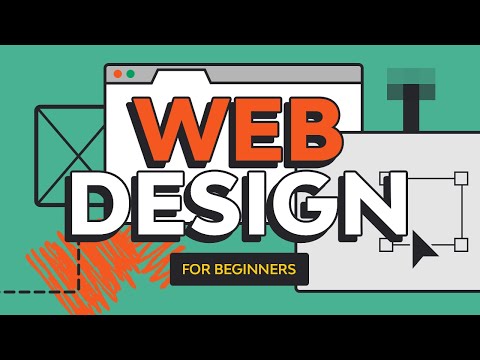Why Customer Experience Issues in Developing a Winning Web Design
Why Customer Experience Issues in Developing a Winning Web Design
Blog Article
A Comprehensive Guide to Crafting Visually Appealing and Functionally Durable Web Design Solutions
A detailed comprehension of fundamental style principles, alongside a keen focus on individual experience, can dramatically boost the efficiency of internet remedies. By leveraging elements such as shade concept and receptive layouts, designers are furnished to develop not only visually pleasing user interfaces yet also ones that foster user engagement.
Comprehending Layout Concepts
Understanding design principles is essential to producing reliable internet remedies that involve users and communicate messages clearly. These principles act as the foundation for any type of effective style job, leading the aesthetic and useful facets of a website. Key design principles include balance, comparison, alignment, repetition, and proximity, each playing an essential role in establishing a cohesive and aesthetically pleasing layout.
Balance involves dispersing aesthetic weight uniformly throughout a page, guaranteeing that no single element bewilders the others. Comparison improves readability and accentuates essential features, permitting customers to navigate the web content easily. Positioning creates order and organization, leading the visitor's eye in a sensible flow. Repetition enhances a regular visual language, strengthening brand name identification and enhancing user knowledge with the interface. Closeness teams related components, assisting customers swiftly understand partnerships between various pieces of web content.
Importance of Individual Experience
Customer experience (UX) is vital in website design, as it straight influences exactly how site visitors interact with a website and regard its value. A properly designed website not only brings in users however additionally keeps them engaged, inevitably leading to higher conversion prices and consumer fulfillment. UX incorporates various aspects, consisting of use, availability, and the total visual appeal of the site.

Moreover, favorable user experiences foster brand name commitment and motivate repeat visits. Eventually, prioritizing individual experience in internet layout is necessary for creating practical, engaging, and successful internet sites that satisfy the needs of modern individuals.
Shade Theory in Internet Layout
Color concept plays a pivotal function in website design, influencing not just the aesthetic charm of a website but likewise the psychological responses of its individuals. Recognizing shade dynamics is necessary for developing an effective individual experience. Shades can stimulate particular feelings; as an example, blue often communicates depend on and professionalism, while red can instill enjoyment or necessity.
When selecting a color combination, designers must take into consideration consistency and comparison. Corresponding colors can create vibrancy, while analogous colors provide an even more tranquil feeling. Making use of devices like shade wheels can assist in identifying effective color combinations. Availability needs to be focused on; making sure adequate contrast between text and background shades is essential for readability.
In addition, social context plays a considerable function in color interpretation. For example, while white signifies pureness in Western societies, it may represent grieving in some Eastern cultures - web design. A comprehensive understanding of the audience is vital when using color concept.
Integrating color psychology right into web layout not only enhances aesthetic appeal yet likewise influences individual behavior, leading them toward desired activities. Ultimately, a well-balanced color approach can considerably elevate the overall influence of a site.
Receptive and Adaptive Formats
In enhancement to color concept, the structure and design of a site considerably influence individual experience and involvement. web design. Responsive and flexible layouts are necessary strategies for making sure that websites work effectively across a plethora of devices and display dimensions
Responsive style uses liquid grids and flexible pictures, permitting the layout to change flawlessly according to the viewport dimensions. This method makes sure a regular user experience, as content reflows her latest blog and resizes, keeping access whether seen on a mobile phone, tablet computer, or desktop computer. Media queries play an important function in receptive layout by using various styles based on the device's qualities.

Both methods aim to enhance user experience by focusing on use and availability. Choosing in between receptive and adaptive layouts greatly next page relies on job requirements, target market, and preferred individual interactions, ultimately contributing to the performance of website design remedies.
Screening and Optimization Techniques
Examining and optimization methods are crucial parts of efficient web layout, guaranteeing that websites not just meet customer assumptions but likewise perform successfully across numerous platforms. These techniques encompass a series of practices intended at assessing use, functionality, and total performance.
A/B screening is a foundational technique, enabling developers to compare 2 versions of a website to establish which carries out much better in terms of individual involvement and conversion rates. Individual screening is equally crucial; it entails gathering comments from actual users to determine discomfort factors and areas for enhancement. This qualitative information can guide design modifications that boost user experience.
Furthermore, performance optimization methods such as picture compression, code minification, and leveraging browser caching can substantially improve tons find more times and responsiveness. Tools like Google PageSpeed Insights and GTmetrix offer valuable metrics for evaluating site performance, making it possible for developers to make data-driven decisions.
Verdict
Responsive formats add to a seamless customer experience across devices, better promoting involvement. Eventually, the application of these techniques not just raises customer fulfillment but additionally drives conversion rates, strengthening the significance of a comprehensive layout framework.
Report this page